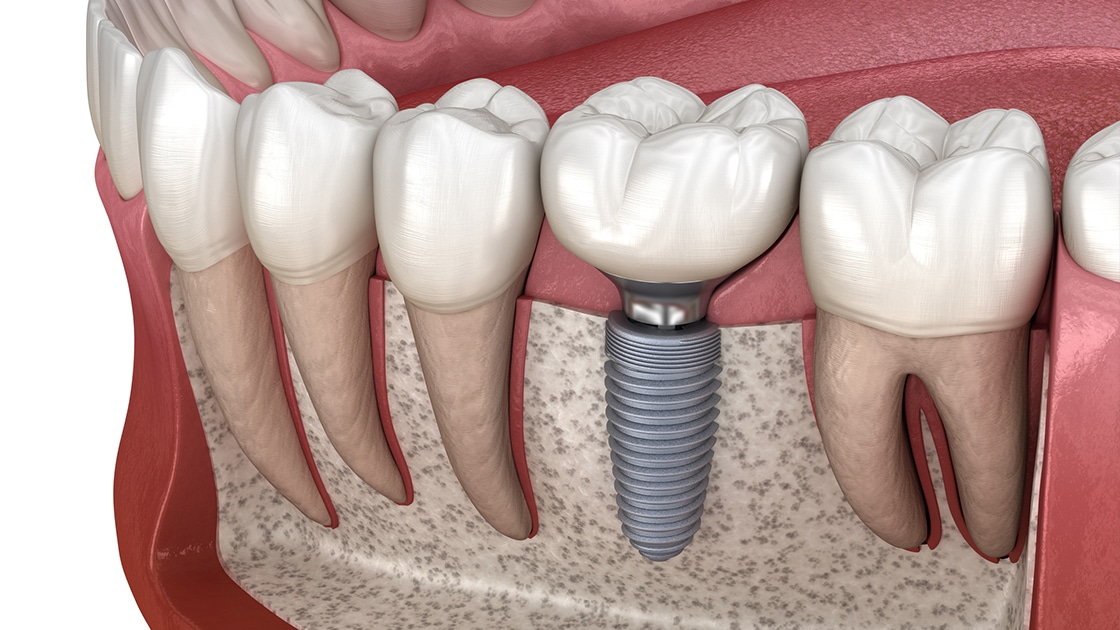The 45-Second Trick For Dental Sense
The 45-Second Trick For Dental Sense
Blog Article
The Main Principles Of Dental Sense
Table of ContentsHow Dental Sense can Save You Time, Stress, and Money.10 Simple Techniques For Dental SenseThe 9-Second Trick For Dental SenseDental Sense Things To Know Before You Buy
are medical gadgets surgically implanted into the jaw to restore an individual's capability to eat or their look. They give support for synthetic (fake) teeth, such as crowns, bridges, or dentures. When a tooth is shed due to injury or disease, an individual can experience complications such as rapid bone loss, malfunctioning speech, or changes to chewing patterns that result in discomfort.Oral implant systems consist of an oral implant body and oral implant abutment and might also include an abutment addiction screw. Dental implant vs bridge. The oral implant body is operatively inserted in the jawbone in place of the tooth's origin. The oral implant abutment is usually connected to the dental implant body by the joint fixation screw and prolongs via gums into the mouth to sustain the connected fabricated teeth
(https://www.goodreads.com/user/show/186244556-matthew-music)Framework of The Dental Implant System choosing dental implants, speak with your dental provider about the potential benefits and risks, and whether you are a candidate for the procedure. Points to consider: Your overall wellness is a vital element in figuring out whether you are a great prospect for oral implants, for how long it will take to recover, and just how long the implant might remain in place.
Smoking might impact the healing process and lower the lasting success of the implant. The healing procedure for the dental implant body may take a number of months or longer, throughout which time you usually have a short-lived joint in area of the tooth. the oral implant procedure: Thoroughly follow the dental health guidelines provided to you by your dental provider.
Dental Sense Things To Know Before You Get This
Implant failure can cause the demand for another medical treatment to deal with or replace the dental implant system. Restores the capacity to eat Recovers cosmetic look Helps keep the jawbone from shrinking because of bone loss Maintains the health and wellness of the surrounding bone and periodontals Aids keep surrounding (close-by) teeth secure Enhances top quality of life Damage to surrounding all-natural teeth throughout dental implant placement Injury to the surrounding cells during surgery, such as sinus perforation Injury during surgery (as an example, crack of surrounding jawbone) Inadequate function, such as seeming like the teeth do not attack together typically An experience that the tooth is loose or turning in location arising from a joint screw loosening Implant body failure (looseness of the implant body) because of systemic infection, which might be more probable in individuals with unrestrained diabetes due to regional infection in bone and gums supporting the implant body because of delayed recovery, which might be more probable in people that smoke Difficulty cleansing the gum tissues around the dental implant, resulting in bad oral hygiene Neglected gum illness Post-surgical numbness due to nerve impingement or damage Always alert wellness treatment providers and imaging specialists that you have dental implants prior to any kind of magnetic vibration imaging (MRI) or x-ray treatments.
FDA is not knowledgeable about any type of negative events reported for MRI or x-ray treatments with oral implants. Oral implants systems are normally made from materials that comply with international agreement requirements of the International Organization for Standardization (ISO) or ASTM International. These requirements have information of what makes a secure product.

A dental implant is a structure that changes a missing tooth. With screw-like devices, the cosmetic surgeon inserts a dental implant right into the jawbone, and it acts as a support for a fabricated tooth, called a crown. A gadget called a joint attaches the synthetic tooth to the oral implant. The crown is customized to fit the individual's mouth and match the color of their teeth.
The Best Strategy To Use For Dental Sense
Some people are not eligible for dental implant surgery. It is for dental cosmetic surgeons to operate on individuals with: severe illnessuncontrollable metabolic diseasebone or soft cells illness or infectionIf these concerns are solved, an individual can have the surgical treatment. In, dental specialists abstain from operating people with: If individuals with any one of the above go through dental implant surgical treatment, there is a higher risk of the dental implant stopping working.

Dental implant surgery is a tailored process. It's not the very same for everyone. Yet the following gives a general introduction of what you can expect your dental professional, oral surgeon, periodontist or prosthodontist to do: Position the implant surgically. Give you time to heal. Attach the article and final crown, bridge or denture.
Next, your cosmetic surgeon will meticulously place the oral implant right into your jaw. If your implant is near the front of your mouth, your dental practitioner will certainly make a short-lived tooth for you to use up until you heal.
Dental Sense for Dummies
Your company can inform you what to expect in your circumstance. Throughout the healing phase, your jawbone he said should fuse to the dental implant. This procedure, called osseointegration, is essential for security and long-lasting success. This procedure can take anywhere from three to 9 months. In some instances, it may take much longer.
When your implant heals, your dental practitioner can connect the abutment (tiny port post) and your final remediation (crown, bridge or denture). This typically takes concerning one hour to complete and may call for a 2nd small surgical procedure. You should not really feel any kind of pain during your oral implant treatment since your copyright will make use of medication to numb your periodontals.
Report this page